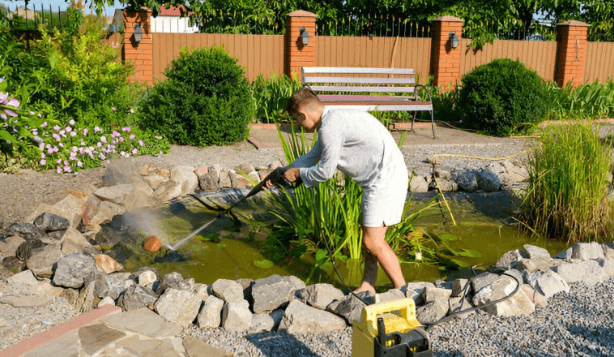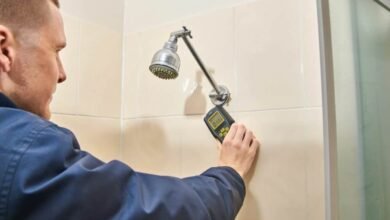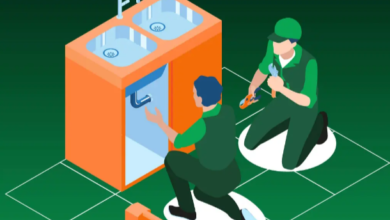Nurturing a Thriving Swimming Pond Hoover That Welcomes Wildlife

Creating a natural retreat in your backyard starts with a well-balanced pond. With the right design and regular care, a Swimming Pond Hoover can become both a peaceful escape and a thriving habitat for wildlife welcoming frogs, dragonflies, birds, and native aquatic plants into your garden. It’s more than just a water feature; it’s a dynamic ecosystem that reflects the health of your outdoor space and encourages biodiversity right outside your door. Still, without proper attention, this delicate balance can easily be disrupted. Overgrown algae, low oxygen levels, or nutrient buildup can drive away the very life you hoped to attract.
Maintaining a pond like this isn’t about achieving a sterile appearance; it’s about cultivating a vibrant, self-regulating environment where natural processes are allowed to flourish. Some plant debris, patches of algae, and seasonal changes are all signs of a living pond—not problems to eliminate, but dynamics to manage wisely. When cared for with a gentle, consistent approach, your pond becomes a year-round sanctuary that supports both visual beauty and ecological health. In the following sections, we’ll explore how thoughtful maintenance makes all the difference in keeping your aquatic space alive, balanced, and resilient.
Embrace Light Hands: Removing Debris Without Overdoing It
Routine cleanup is essential, but moderation is key. Use a pond net or fine mesh skimmer to gently remove fallen leaves, twigs, and surface debris. This prevents buildup that could feed algae or clog natural water flow.
However, resist the urge to over-clean. A thin layer of leaf litter supports insects and provides refuge for amphibians. Try weekly skimming, especially in autumn, when leaf fall peaks. Always preserve natural shelter zones near the edges.
Algae Isn’t the Enemy—Until It Is
A thin layer of algae is normal and even beneficial. It contributes oxygen and feeds microorganisms. But unchecked algae growth can smother your pond, consume oxygen, and block light from reaching other aquatic life.
To manage algae naturally:
- Introduce floating plants like water lilies and duckweed to shade the water surface.
- Avoid overfeeding any fish in your pond—leftover food encourages algae blooms.
- Limit direct sunlight with strategic shrub planting around the perimeter.
- If algae explodes, use only wildlife-safe, biodegradable treatments.
The trick is to create competition for nutrients so algae doesn’t dominate.
Plant Control: Let Nature Breathe, But Set Boundaries
Native pond plants do a lot of good—they stabilize banks, filter water, and provide cover for critters. But without regular pruning, they may overwhelm the pond.
Give special attention to fast growers like water hyacinths or marginals at the edge. Trimming back excess growth keeps the ecosystem balanced. Before composting cuttings, leave them on the edge of the pond overnight. This gives any small creatures time to return to safety.
If your Swimming Pond Hoover includes reeds or lilies, maintain open patches of water for ventilation and light access.
Never Fully Drain—Refresh with Care
It might seem smart to empty the pond during a dirty spell, but this removes beneficial bacteria, larvae, and stable conditions that wildlife depend on.
Instead, replace 10–20% of the water every few weeks if clarity drops or nutrients surge. Use collected rainwater or dechlorinated tap water to avoid shocking the pond’s chemistry. A gentle refill preserves the microbial foundation of your pond.
Sediment and Sludge: Manage It Gently
The pond bottom slowly accumulates a layer of organic sludge—a mix of leaves, dead algae, fish waste, and dirt. If ignored, it can create odors and cloudy water.
Use a Swimming Pond Hoover or pond vacuum in spring or early fall to extract some of the sludge. Avoid over-cleaning and always skip this process during breeding months (late spring and early summer) to protect eggs, tadpoles, and aquatic larvae.
Add barley straw bundles or beneficial bacteria treatments to help break down sludge naturally over time.
Tune into Wildlife Patterns and Signals
When frogs leap, dragonflies hover, and birds sip from the edges—you know your pond is thriving. A sudden absence of wildlife often signals a disturbance: chemical exposure, water pollution, or habitat loss.
Boost your pond’s appeal:
- Create shallow entry points or sloped banks.
- Add native aquatic plants for food and shelter.
- Avoid bright artificial lights near the pond at night.
- Never use harsh herbicides or pesticides around the area.
Monitor activity throughout the seasons to gauge the health of your environment.
Seasonal Shifts: Adapt Your Care Year-Round
Your pond’s needs change with the calendar:
Spring
- Start by skimming debris and trimming back plant overgrowth.
- Watch for spawning frogs and insects before disturbing the water.
Summer
- Control algae growth with shade plants and water circulation.
- Limit feeding if you keep fish to avoid nutrient spikes.
Fall
- Skim off fallen leaves regularly.
- Thin out marginal plants to maintain open water areas.
Winter
- Stop feeding fish once temperatures drop.
- Keep a section of the surface ice-free using a pond de-icer or floating ball to allow gas exchange.
By following nature’s rhythm, you support an environment that rebounds year after year.
Small Touches That Make a Big Difference
You don’t need fancy equipment to make your pond better. Here are a few budget-friendly improvements:
- Add stones and logs: These create mini-habitats for insects, frogs, and birds.
- Install a small solar fountain: It encourages oxygenation without disrupting the calm.
- Create a mini wetland zone: This buffers runoff and provides space for filter plants.
- Use rain barrels: Collect water for topping off the pond without adding chlorine.
These subtle touches boost the pond’s health without disrupting the ecosystem’s natural rhythm.
Final Thoughts: Let Wild and Clean Coexist
A wildlife pond isn’t meant to be sterile. It should buzz, ripple, and bloom. Cleanliness doesn’t mean erasing all mess—it means maintaining an environment where life thrives.
A Swimming Pond Hoover becomes more than a backyard feature when you nurture it with consistency, care, and respect for the life it supports. With the right balance, you’ll create a natural space that’s as enriching to observe as it is to maintain.
Clearing Up Confusion
What is the best time of year to clean a wildlife pond?
Early spring and early fall are ideal. Avoid deep cleaning in late spring or summer to protect breeding wildlife like frogs and dragonflies.
Can I use a Swimming Pond Hoover on a wildlife pond?
Yes, but use it sparingly. Focus on removing excess sludge in small sections, and never clean the entire bottom in one session. Choose a gentle model suited for ecological ponds.
How do I control algae without harming wildlife?
Use shade plants, limit nutrient input, and try natural barley straw or safe biological additives. Avoid algaecides unless they’re specifically labeled as wildlife-safe.
Do I need a filter in a natural wildlife pond?
Not necessarily. A well-designed pond with the right mix of plants, depth, and balance may not need mechanical filtration. However, a small biological filter or aerator can help in high-load systems or warmer climates.
Is it okay if my pond looks a little messy?
Absolutely. Some mess—like fallen leaves, algae patches, and plant overgrowth—is natural. As long as wildlife is present and the water stays relatively clear, you’re doing well.





